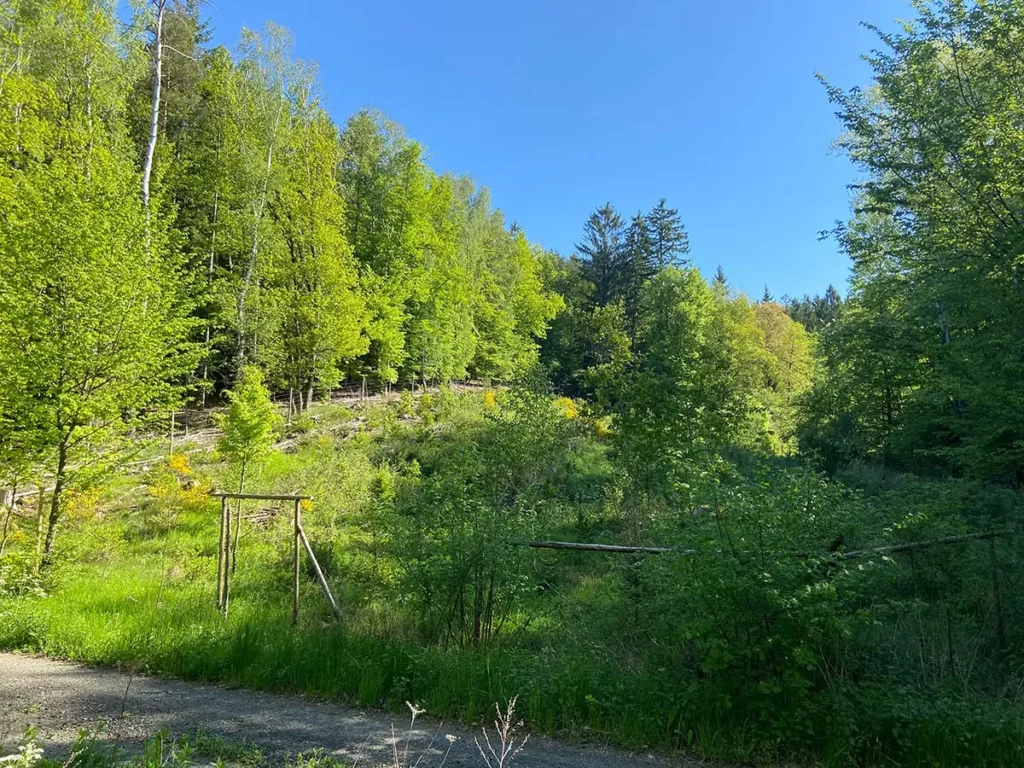The forest and its multifunctional use
Rhineland-Palatinate is one of the most densely forested federal states. As of 2024, around 43% (approx. 854,000 hectares) of the state‘s area was forested. Sustainability has been the guiding principle in forestry for over 300 years. In near-natural silviculture, implemented forestry measures are oriented towards natural processes. The goal is to steer the development of forests in such a way that they provide both economic yields and social and ecosystemic services. One principle of near- natural silviculture is the establishment of species-rich mixed forests, which are also more resilient to the consequences of climate change.

At this site, two different forms of forest management can be found. On the right-hand side, a young forest is growing on the glade from the seeds of the old trees aft er clearing. Wind, birds and other animals help to disperse the seeds. In addition, new trees, Douglas firs, have been planted. A fence protection prevents browsing by roe deer and red deer. This creates a new species-rich forest. On the left , you can see an area of forest that has been almost left to grow on its own. It is a mixed forest of beech, oak, pine and spruce that can renew itself and requires only minor protection measures.






